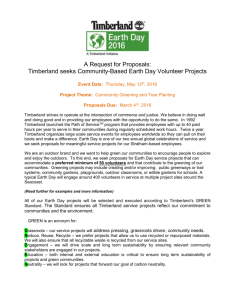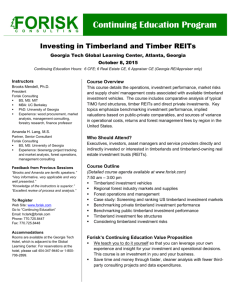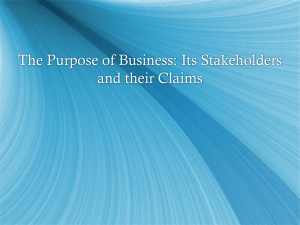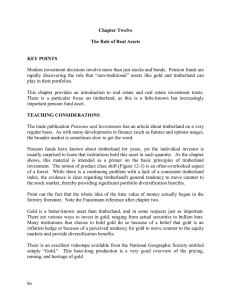File
advertisement
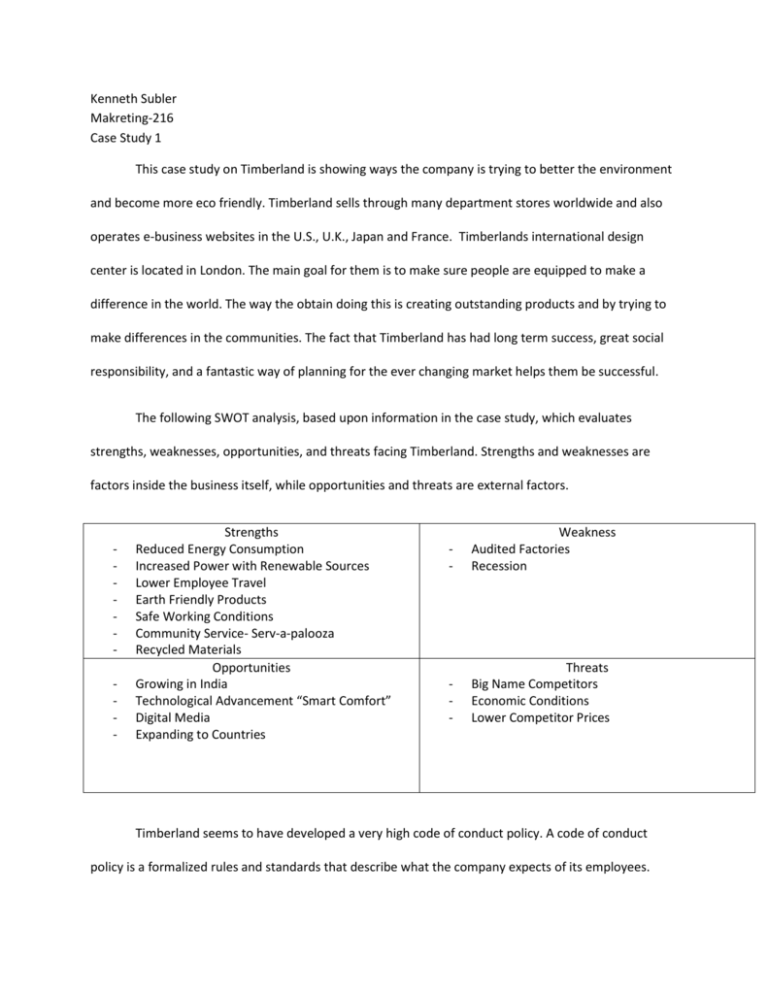
Kenneth Subler Makreting-216 Case Study 1 This case study on Timberland is showing ways the company is trying to better the environment and become more eco friendly. Timberland sells through many department stores worldwide and also operates e-business websites in the U.S., U.K., Japan and France. Timberlands international design center is located in London. The main goal for them is to make sure people are equipped to make a difference in the world. The way the obtain doing this is creating outstanding products and by trying to make differences in the communities. The fact that Timberland has had long term success, great social responsibility, and a fantastic way of planning for the ever changing market helps them be successful. The following SWOT analysis, based upon information in the case study, which evaluates strengths, weaknesses, opportunities, and threats facing Timberland. Strengths and weaknesses are factors inside the business itself, while opportunities and threats are external factors. - Strengths Reduced Energy Consumption Increased Power with Renewable Sources Lower Employee Travel Earth Friendly Products Safe Working Conditions Community Service- Serv-a-palooza Recycled Materials Opportunities Growing in India Technological Advancement “Smart Comfort” Digital Media Expanding to Countries - Weakness Audited Factories Recession - Threats Big Name Competitors Economic Conditions Lower Competitor Prices Timberland seems to have developed a very high code of conduct policy. A code of conduct policy is a formalized rules and standards that describe what the company expects of its employees. They also look al lot into saving energy and earth friendly materials. The code of conduct for Timberland forbids discrimination, child labor, and unsafe practices. Timberland also achieves goals by introducing many new products and expanding the company. They also do this by looking at ways they can protect the environment so it’s before for people and their workers. 1. The forces in the marking environment that pose the greatest challenges would be other competitors because companies can use the same type of technique in creating a newer more improved product. 2. The types of ethical issues that Timberland faces is when they were audited in the factories or facilities. 3. Timberlands reputation for social responsibility serves as strengths when other consumers are turning away because they give a great quality in their product, and their past success and constant customer satisfaction are all ways it helps them. 4. The marketing advantages of using eco-friendly products is that it show consumers how you care about the environment and show that you agree with going green. The disadvantage of using these labels is the fact that by using all these recycled products consumers could think that the product is cheaply made and or poorly.
